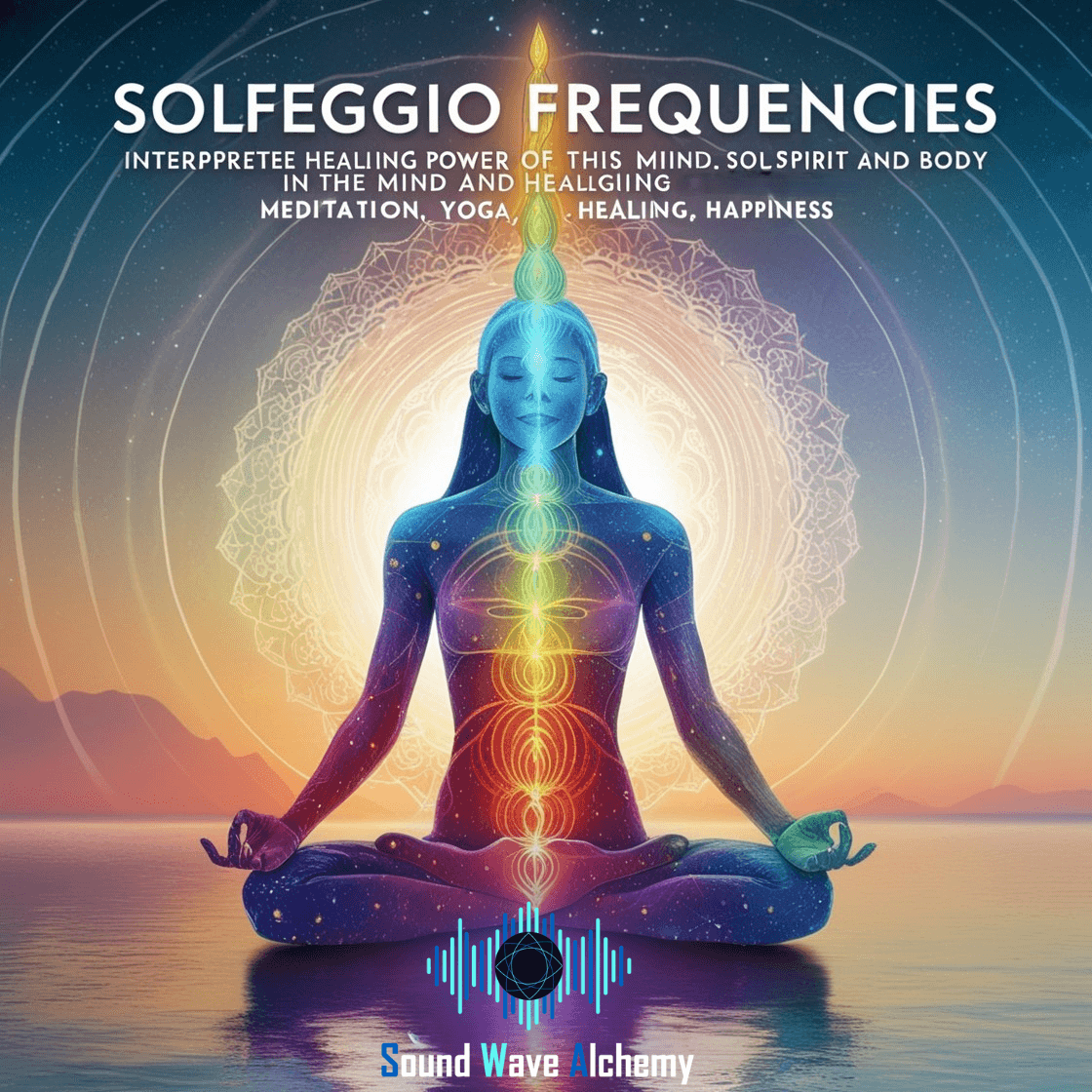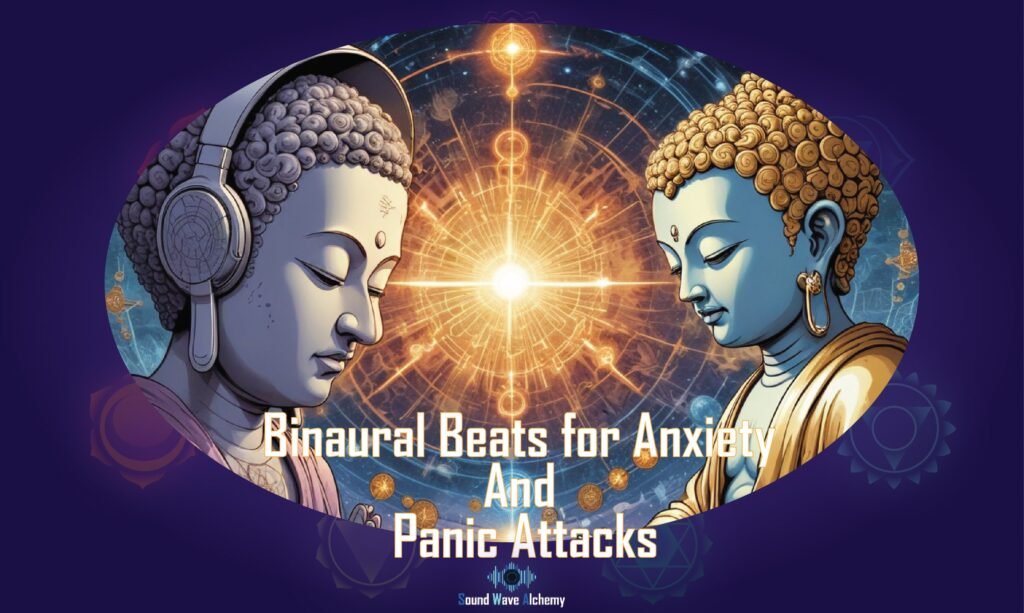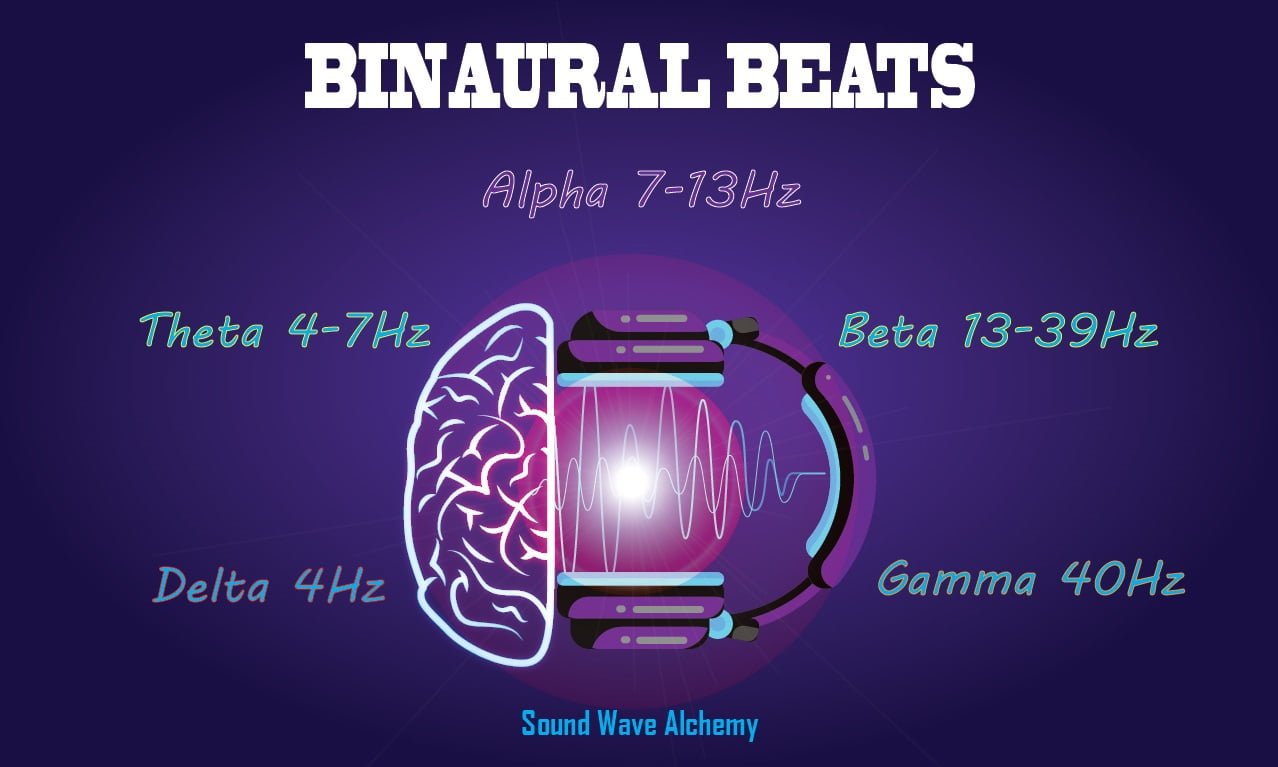Binaural beats have been gaining popularity as a natural and non-invasive way to reduce anxiety, stress, and panic attacks. Binaural beats are an auditory illusion produced by playing two slightly different frequencies in each ear. This difference creates a third frequency, which is perceived by the brain and can induce a state of relaxation and calmness. Binaural beats are a form of subliminal music for anxiety that works by influencing brain waves.
Research has shown that binaural beats can have a positive impact on anxiety and stress levels. For example, a study published in the Journal of Alternative and Complementary Medicine found that binaural beats for anxiety and depression can significantly reduce anxiety in patients undergoing a medical intervention. Another study published in the International Journal of Nursing Practice found that binaural music for anxiety can reduce stress and anxiety levels in nursing students.
While binaural beats may not be a cure for anxiety or panic attacks, they can be a helpful tool in managing symptoms alongside other techniques like relaxing music that produces serotonin to relieve anxiety. It’s important to note that the best binaural beats for anxiety should not be used as a replacement for professional medical advice or treatment. If you are experiencing severe anxiety or panic attacks, it’s important to seek help from a mental health professional.
Zen Essentials for Binaural Beats
-

-
 Sunrise Alarm Clock & Sound Machine
Sunrise Alarm Clock & Sound Machine
Gentle wake-up, screen-free routines, white noise, smart light.
From $169.99 -
 Sony WH-1000XM6 – Meditation & Travel Headphones
Sony WH-1000XM6 – Meditation & Travel Headphones
Top-tier noise canceling, clarity & comfort. Great for deep focus, meditation, or travel.
$448.00
- Understanding Binaural Beats
- Binaural Beats for Anxiety and Panic Attacks
- Practical Guide to Using Binaural Beats
- Complementary Techniques and Lifestyle Changes
- Frequently Asked Questions
- What specific frequencies of binaural beats are most effective for reducing anxiety?
- How long should I listen to binaural beats to help with stress relief?
- Can binaural beats be used alongside meditation for treating panic attacks?
- Are there any side effects associated with using binaural beats for anxiety management?
- How do binaural beats influence the brain to alleviate symptoms of anxiety and depression?
- What are the differences between binaural beats and traditional music therapy in treating stress disorders?
Understanding Binaural Beats
Definition and History
Binaural beats, also known as bilateral beats for anxiety, binary beats, bineral beats, or binaurel beats, are an auditory illusion produced by playing two slightly different frequencies in each ear. The brain processes these frequencies and produces a third frequency which is the difference between the two. For example, if a frequency of 500 Hz is presented to the left ear and a frequency of 510 Hz is presented to the right ear, the brain will perceive a binaural beat of 10 Hz, which is in the alpha waves frequency range.
The concept of binaural beats was first discovered in 1839 by German physicist Heinrich Wilhelm Dove. However, it wasn’t until the 1970s that they became popular as a tool for relaxation and meditation.

Brainwave-tuned audio for deep meditation, alignment, and inner calm.
A perfect tool for high-vibe self-healing.
$249.49 $24.00

Pure pulsing tones to re-center your focus and balance your energy field.
Royalty-free for use in personal or healing work.
$149.99 $36.69
Scientific Basis
Research has shown that binaural beats can have an effect on the brainwaves of the listener. Different frequencies of binaural beats have been associated with different states of consciousness, such as relaxation, meditation, and sleep. The best sound frequency for anxiety tends to be in the alpha waves range of 8-13 Hz.
One theory is that binaural beats work by synchronizing the activity of the brain’s hemispheres. This is because the left and right hemispheres of the brain are responsible for processing different types of information. By presenting different frequencies to each ear, binaural sounds for anxiety may help to balance the activity between the hemispheres.
How They Influence the Brain
Studies have shown that binaural beats can have a calming effect on the listener by influencing anxiety brain waves. This is because they can help to lower the activity of the sympathetic nervous system, which controls the body’s “fight or flight” response.
Binaural beats have also been shown to increase the activity of the parasympathetic nervous system, which is responsible for the body’s “rest and digest” response. This may induce feelings of calmness and relaxation. Binaural beats at a 6hz frequency have even been shown to reduce cortisol, the stress hormone.
Overall, while the scientific evidence is still limited, binaural beats may be a useful tool as a form of brain healing music for anxiety. It’s important to note that they should not be used as a replacement for professional medical advice or treatment.
Binaural Beats for Anxiety and Panic Attacks
Mechanism of Action
Binaural beats are a form of auditory stimulation that involves presenting two different tones to each ear. The brain perceives the difference between these two tones as a third tone, which is known as the binaural beat frequency. This process is believed to activate the brain’s natural relaxation response, which can help to reduce anxiety and stress.
Research has shown that binaural beats can stimulate the brain’s alpha waves and theta waves, which are associated with relaxation and meditation. By increasing the production of these waves, binaural beats can help to reduce the activity of the sympathetic nervous system, which is responsible for the body’s stress response. Finding the right anti anxiety frequency or frequencies for anxiety relief is key.
Research Findings
Several studies have investigated the effectiveness of binaural beats for anxiety relief. A randomized controlled study published in the Journal of Alternative and Complementary Medicine found that binaural beats were effective in reducing preoperative anxiety in women undergoing elective caesarean section [1]. Another study published in the Journal of Medical Internet Research found that binaural beats embedded in music were effective in reducing anxiety in university health science students [2].
⭐️⭐️⭐️⭐️⭐️ (4.3/5)
Perfect support for your meditation and relaxation moments.
Just $189.99
🪑 Relax & Buy NowTypes of Binaural Beats for Anxiety
Several types of binaural beats can be used for anxiety relief. Delta binaural beats are associated with deep sleep and relaxation, while alpha waves binaural beats are associated with relaxation and meditation. Theta binaural beats are associated with deep relaxation and creativity, while gamma binaural beats are associated with increased focus and concentration.
It is important to note that even the best hz for anxiety binaural beats should not be used as a substitute for professional medical treatment. If you are experiencing severe anxiety or panic attacks, it is important to seek the advice of a healthcare professional.
Practical Guide to Using Binaural Beats

Binaural beats have been found to be an effective tool for reducing anxiety, stress, and panic attacks. However, in order to achieve the best results, it is important to use them correctly. In this section, we will provide you with a practical guide to using binaural beats.
Finding the Right Frequencies
The first step in using binaural beats is to find the right frequencies. Binaural beats work by creating a difference between the frequencies heard in each ear. This resulting “binaural beat frequency” is what causes the brain to relax and attain the desired state.
There are many different frequencies to choose from, and each one has a different effect on the brain. For example, a frequency of 10 Hz is associated with relaxation, while a frequency of 40 Hz is associated with alertness. It is important to choose the right frequency for the desired effect. Some popular option includes:
Creating the Ideal Environment
Once you have found the right frequency, it is important to create the ideal environment for using binaural beats. This means finding your sacred place, a place where you can be comfortable, zen and relax, where you will not be disturbed. You also need to use headphones to ensure that you are hearing and harnessing the binaural beats benefits in both ears.
In addition, it can be helpful to dim the lights or use candles to create a relaxing atmosphere. You may also want to use aromatherapy, such as essential oils or incense, to further enhance the relaxation experience.
Safety and Precautions
While binaural beats are generally safe, there are a few precautions that you should take. First, do not use binaural beats while driving or operating heavy machinery. This is because binaural beats can cause drowsiness and impair your ability to focus.
Second, if you have a history of seizures or epilepsy, you should consult with your doctor before using binaural beats. This is because binaural beats can sometimes trigger seizures in people with these conditions.
Finally, if you experience any discomfort or pain while using binaural beats, stop using them immediately and consult with your doctor.
In conclusion, binaural beats can be a powerful tool for reducing anxiety, stress, and panic attacks. By following the practical guide provided in this section, you can use binaural beats safely and effectively to achieve the desired results.
Complementary Techniques and Lifestyle Changes
Mindfulness and Meditation
In addition to binaural beats, mindfulness and meditation are complementary techniques that can help reduce anxiety, stress, and panic attacks. Mindfulness is the practice of being present in the ‘NOW’ moment and paying attention to your thoughts and feelings without judgment. Meditation involves focusing your attention on a particular object, thought, or activity to achieve a state of calmness and relaxation, and also we have Silent Meditation, which I found combine both set of Mindfulness and Meditation, where you sit, relax, and just be here and now.
Research has shown that mindfulness and meditation can help reduce symptoms of anxiety and stress. One study found that mindfulness-based stress reduction (MBSR) was effective in reducing anxiety symptoms in people with generalized anxiety disorder [1]. Another study found that a combination of mindfulness and cognitive-behavioral therapy (CBT) was effective in reducing symptoms of panic disorder [2].

Brainwave-tuned audio for deep meditation, alignment, and inner calm.
A perfect tool for high-vibe self-healing.
$249.49 $24.00

Pure pulsing tones to re-center your focus and balance your energy field.
Royalty-free for use in personal or healing work.
$149.99 $36.69
Healthy Habits for Stress Management
In addition to complementary techniques, making healthy lifestyle changes can also help reduce anxiety, stress, and panic attacks. Some healthy habits that can help manage stress include:
- Getting enough sleep: Lack of sleep can lead to increased stress and anxiety. Aim for 7-8 hours of sleep per night and check our article for ‘The best Binaural Beats for Sleep‘ and ‘The Best Solfeggio Frequencies for Sleep‘
- Eating a balanced diet: Eating a healthy diet that includes fruits, vegetables, whole grains, and lean protein can help reduce stress and anxiety.
- Exercise: Regular exercise can help relieve stress and anxiety. Aim for 30 minutes of moderate activity 3-5 days of the week.
- Limiting caffeine and alcohol: Caffeine and alcohol can increase anxiety and stress. Limit your intake of these substances.
- Excessive Weed Consummation: We all know the weed effect on our body and brain state, thus is help the brain get into Alpha state, but the excessive smoking of you create a void in that state, leading to addiction and stress, resulting in the contrary effect of smoking weed.
- Practicing relaxation techniques: Relaxation techniques such as deep breathing, progressive muscle relaxation, and visualization can help reduce stress and anxiety.

Awaken inner balance and peace with this chakra-tuned meditation album.
Infused with the ancient Solfeggio frequencies to help you align and heal naturally.
$249.99 $96.69
Making these healthy lifestyle changes can help reduce anxiety, stress, and panic attacks in conjunction with binaural beats and other complementary techniques like Meditation, Solfeggio Frequencies, or even Hypnosis. However, it is important to note that these lifestyle changes should not be used as a substitute for professional medical treatment. If you are experiencing severe anxiety or panic attacks, it is important to seek help from a qualified healthcare provider.
Frequently Asked Questions
What specific frequencies of binaural beats are most effective for reducing anxiety?
There is no one-size-fits-all answer to this question, as the most effective frequencies may vary from person to person. Generally, binaural beats in the range of 4-7 Hz (theta waves) and 8-13 Hz (alpha waves) are believed to be effective for reducing anxiety. However, some individuals may find that higher or lower frequencies work better for them. It’s important to experiment with different frequencies to find the one that works best for you.
How long should I listen to binaural beats to help with stress relief?
The length of time you should listen to binaural beats for stress relief can vary depending on your individual needs and preferences. Some people find that just a few minutes of listening to binaural beats can help them feel more relaxed and centered, while others may prefer to listen for longer periods of time. As a general rule, we recommend starting with shorter listening sessions (5-10 minutes) and gradually increasing the length of time as you become more comfortable with the practice.
Can binaural beats be used alongside meditation for treating panic attacks?
Yes, binaural beats can be a helpful tool for individuals who are looking to manage panic attacks through meditation. By combining the calming effects of binaural beats with the focused attention of meditation, individuals may be able to reduce the frequency and intensity of their panic attacks over time. However, it’s important to note that binaural beats and meditation should not be used as a substitute for professional medical care.
Are there any side effects associated with using binaural beats for anxiety management?
While binaural beats are generally considered safe for most people, there are some potential side effects to be aware of. Some individuals may experience headaches, dizziness, or nausea when listening to binaural beats, particularly if they are listening at high volumes or for extended periods of time. Additionally, individuals with a history of seizures or epilepsy should consult with a healthcare professional before using binaural beats.
How do binaural beats influence the brain to alleviate symptoms of anxiety and depression?
Binaural beats work by creating a rhythmic pattern of sound that can influence the brain’s electrical activity. This, in turn, can help to regulate brainwave activity and promote relaxation and stress reduction. Some research suggests that binaural beats may also help to increase the production of certain neurotransmitters, such as serotonin and dopamine, which can have a positive effect on mood and emotional well-being.
What are the differences between binaural beats and traditional music therapy in treating stress disorders?
While both binaural beats and traditional music therapy can be effective tools for managing stress and anxiety, there are some key differences between the two approaches. Traditional music therapy typically involves the use of live or recorded music to promote relaxation and emotional well-being, while binaural beats rely on a specific pattern of sound frequencies to influence brainwave activity. Additionally, binaural beats can be easily accessed through digital platforms, making them a convenient option for individuals who are looking to manage stress and anxiety on their own.







